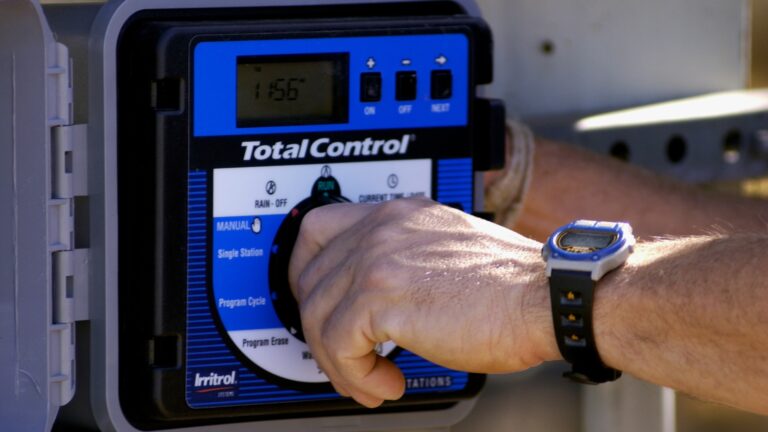Three bids received for construction of sanitation and drinking water works in Ciudad del Este – BNamericas

Report on the Ciudad del Este Water and Sanitation Infrastructure Project
A strategic infrastructure initiative, the Wastewater Treatment and Disposal System in Ciudad del Este, Alto Paraná, has advanced to the bidding stage. This project is fundamentally aligned with the United Nations’ Sustainable Development Goals (SDGs), aiming to enhance the quality of life for approximately 300,000 residents through significant improvements in public health and environmental sustainability.
Direct Contribution to Sustainable Development Goals (SDGs)
The project’s design and objectives are intrinsically linked to the 2030 Agenda for Sustainable Development, with a primary focus on several key goals:
- SDG 6: Clean Water and Sanitation: This is the project’s core objective. By constructing a modern wastewater treatment system and improving drinking water infrastructure, the initiative directly addresses Target 6.1 (achieve universal access to safe drinking water) and Target 6.3 (improve water quality by treating wastewater).
- SDG 3: Good Health and Well-being: The provision of clean water and effective sanitation is critical for preventing waterborne diseases. This project will contribute to Target 3.9 by substantially reducing illnesses and deaths from water pollution and contamination.
- SDG 11: Sustainable Cities and Communities: The initiative strengthens essential urban infrastructure, making Ciudad del Este more resilient and livable. It aligns with Target 11.1 by improving access to basic services and Target 11.6 by reducing the adverse environmental impact of the city.
- SDG 14: Life Below Water: By ensuring proper sewage treatment, the project will prevent untreated wastewater from contaminating local water bodies, thereby protecting aquatic ecosystems and contributing to the goals of Target 14.1.
- SDG 17: Partnerships for the Goals: The project exemplifies a robust global partnership, mobilizing significant financial resources from international partners to achieve sustainable development.
Tender Process and Bidding Details
The Ministry of Public Works and Communications (MOPC) received bids from three prequalified companies for the execution of the project, identified under MOPC process No. 55/2024 (ID No. 451,167). The submitted proposals are currently under evaluation.
Bidders
- Acciona Agua S.A.
- Rovella Tocsa Consortium
- BTD Proyectos 12 S.A.
Financial Framework and International Cooperation
The project is supported by a substantial financial commitment totaling US$200 million, underscoring the power of international partnerships as outlined in SDG 17.
Funding Sources
- Inter-American Development Bank (IDB): US$115 million
- Japan International Cooperation Agency (JICA): US$85 million
Project Significance and Governance
This initiative represents a landmark for Paraguay as it is the first public works contract in the country to be implemented under the International Federation of Consulting Engineers (FIDIC) standards. The adoption of these internationally recognized standards ensures a framework of transparency, efficiency, and quality in project execution, aligning with the principles of SDG 16 (Peace, Justice, and Strong Institutions). The resulting high-technology infrastructure will provide a sustainable solution for wastewater management, yielding long-term benefits for public health and regional environmental integrity.
Analysis of Sustainable Development Goals in the Article
1. Which SDGs are addressed or connected to the issues highlighted in the article?
The article discusses a large-scale infrastructure project focused on sanitation and drinking water in Ciudad del Este, Paraguay. Based on its content, the following Sustainable Development Goals (SDGs) are directly addressed:
- SDG 6: Clean Water and Sanitation: This is the most prominent SDG, as the project’s core purpose is the construction of a “Wastewater Treatment and Disposal System” and a “Drinking Water and Sanitation Program.”
- SDG 3: Good Health and Well-being: The article explicitly states that the project will “contribute decisively to improving the environment and health of the entire region,” directly linking sanitation infrastructure to public health outcomes.
- SDG 9: Industry, Innovation, and Infrastructure: The project itself is a significant development of “modern, high-tech infrastructure” aimed at improving basic services for a large population.
- SDG 11: Sustainable Cities and Communities: By improving essential services like water and sanitation for approximately 300,000 people in Ciudad del Este, the project directly contributes to making the city more inclusive, safe, resilient, and sustainable.
- SDG 17: Partnerships for the Goals: The project is a collaborative effort involving the government of Paraguay (MOPC) and international financial institutions, specifically the Inter-American Development Bank (IDB) and the Japan International Cooperation Agency (JICA), who are providing US$200 million in financing.
2. What specific targets under those SDGs can be identified based on the article’s content?
Several specific targets can be identified from the details provided in the article:
- Under SDG 6 (Clean Water and Sanitation):
- Target 6.1: “By 2030, achieve universal and equitable access to safe and affordable drinking water for all.” The project is part of the “Drinking Water and Sanitation Program” for the metropolitan area.
- Target 6.2: “By 2030, achieve access to adequate and equitable sanitation and hygiene for all…” The project focuses on the “construction of sanitation… works.”
- Target 6.3: “By 2030, improve water quality by reducing pollution… halving the proportion of untreated wastewater…” The central component is the “Wastewater Treatment and Disposal System,” which will allow for “proper sewage treatment.”
- Under SDG 3 (Good Health and Well-being):
- Target 3.9: “By 2030, substantially reduce the number of deaths and illnesses from… water… pollution and contamination.” The article highlights that the project will improve the “health of the entire region” by managing wastewater.
- Under SDG 9 (Industry, Innovation, and Infrastructure):
- Target 9.1: “Develop quality, reliable, sustainable and resilient infrastructure… to support… human well-being, with a focus on… equitable access for all.” The project involves building “modern, high-tech infrastructure” for essential services.
- Under SDG 11 (Sustainable Cities and Communities):
- Target 11.6: “By 2030, reduce the adverse per capita environmental impact of cities, including by paying special attention to… municipal and other waste management.” The wastewater treatment system directly addresses the management of municipal sewage, improving the urban environment.
- Under SDG 17 (Partnerships for the Goals):
- Target 17.3: “Mobilize additional financial resources for developing countries from multiple sources.” The project is financed with US$200 million from the IDB and JICA.
3. Are there any indicators mentioned or implied in the article that can be used to measure progress towards the identified targets?
Yes, the article mentions and implies several quantitative and qualitative indicators:
- Number of beneficiaries: The article explicitly states the project “will directly impact the quality of life of approximately 300,000 people.” This number serves as a direct indicator for measuring the population with access to improved water and sanitation services (relevant to Targets 6.1 and 6.2).
- Financial Investment: The total investment of “US$200 million” is a clear indicator of the financial resources mobilized for this development project, which relates to Target 17.3. The breakdown of funding (“US$115 million comes from the IDB and US$85 million from the Japan International Cooperation Agency (JICA)”) provides further detail.
- Infrastructure Development: The primary outcome, the “construction of sanitation and drinking water works” and a “Wastewater Treatment and Disposal System,” is itself a key indicator of progress towards Target 9.1. The completion and operational capacity of this infrastructure would be the measure.
- Proportion of Wastewater Treated: While not giving a specific percentage, the creation of a new “wastewater treatment system” implies a significant increase in the proportion of treated wastewater in Ciudad del Este, directly measuring progress towards Target 6.3.
- Adoption of International Standards: The article mentions the project will be implemented “under FIDIC (International Federation of Consulting Engineers) standards, internationally recognized for ensuring transparency, efficiency, and quality.” This is a qualitative indicator of the quality and governance of the infrastructure project (Target 9.1).
4. Summary Table of SDGs, Targets, and Indicators
| SDGs | Targets | Indicators Identified in the Article |
|---|---|---|
| SDG 6: Clean Water and Sanitation | 6.1 Access to safe drinking water 6.2 Access to adequate sanitation 6.3 Improve water quality by treating wastewater |
– Number of beneficiaries with access to new services (approx. 300,000 people). – Construction of a “Wastewater Treatment and Disposal System.” |
| SDG 3: Good Health and Well-being | 3.9 Reduce illnesses from water pollution | – Implied reduction in waterborne illnesses due to “proper sewage treatment” that improves regional health. |
| SDG 9: Industry, Innovation, and Infrastructure | 9.1 Develop quality, reliable, and sustainable infrastructure | – Construction of “modern, high-tech infrastructure.” – Implementation under FIDIC international standards for quality and transparency. |
| SDG 11: Sustainable Cities and Communities | 11.6 Reduce the environmental impact of cities | – Development of a wastewater treatment system to manage municipal sewage in Ciudad del Este. |
| SDG 17: Partnerships for the Goals | 17.3 Mobilize financial resources | – US$200 million in financing from international partners (IDB and JICA). |
Source: bnamericas.com

What is Your Reaction?
 Like
0
Like
0
 Dislike
0
Dislike
0
 Love
0
Love
0
 Funny
0
Funny
0
 Angry
0
Angry
0
 Sad
0
Sad
0
 Wow
0
Wow
0

















































:focal(1500,1000)/https://media.globalcitizen.org/a6/9a/a69a4720-d8a1-4715-b596-18738d03c05c/rotary_polio_hero_image.jpg?#)






/countries/sri-lanka/photo-credit---dmc-sri-lanka.tmb-1200v.jpg?sfvrsn=dc298bcc_1#)










.jpg?#)






